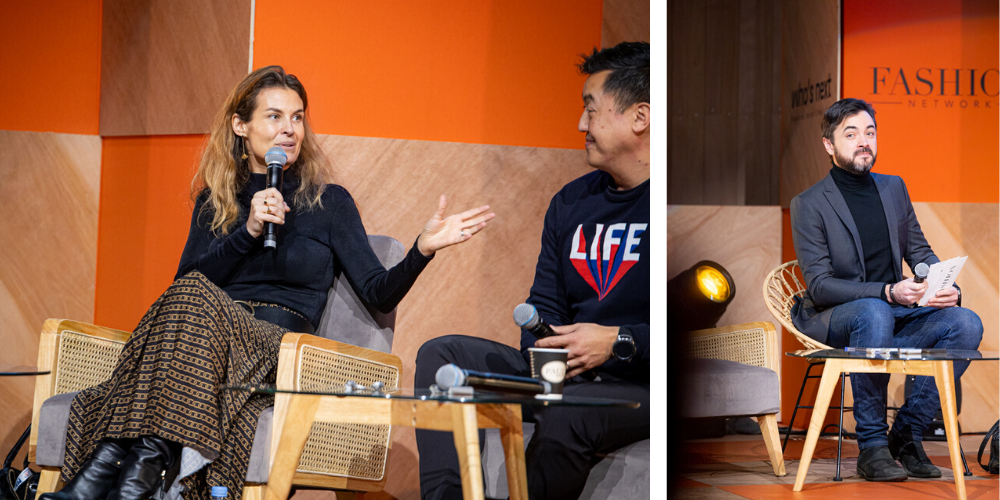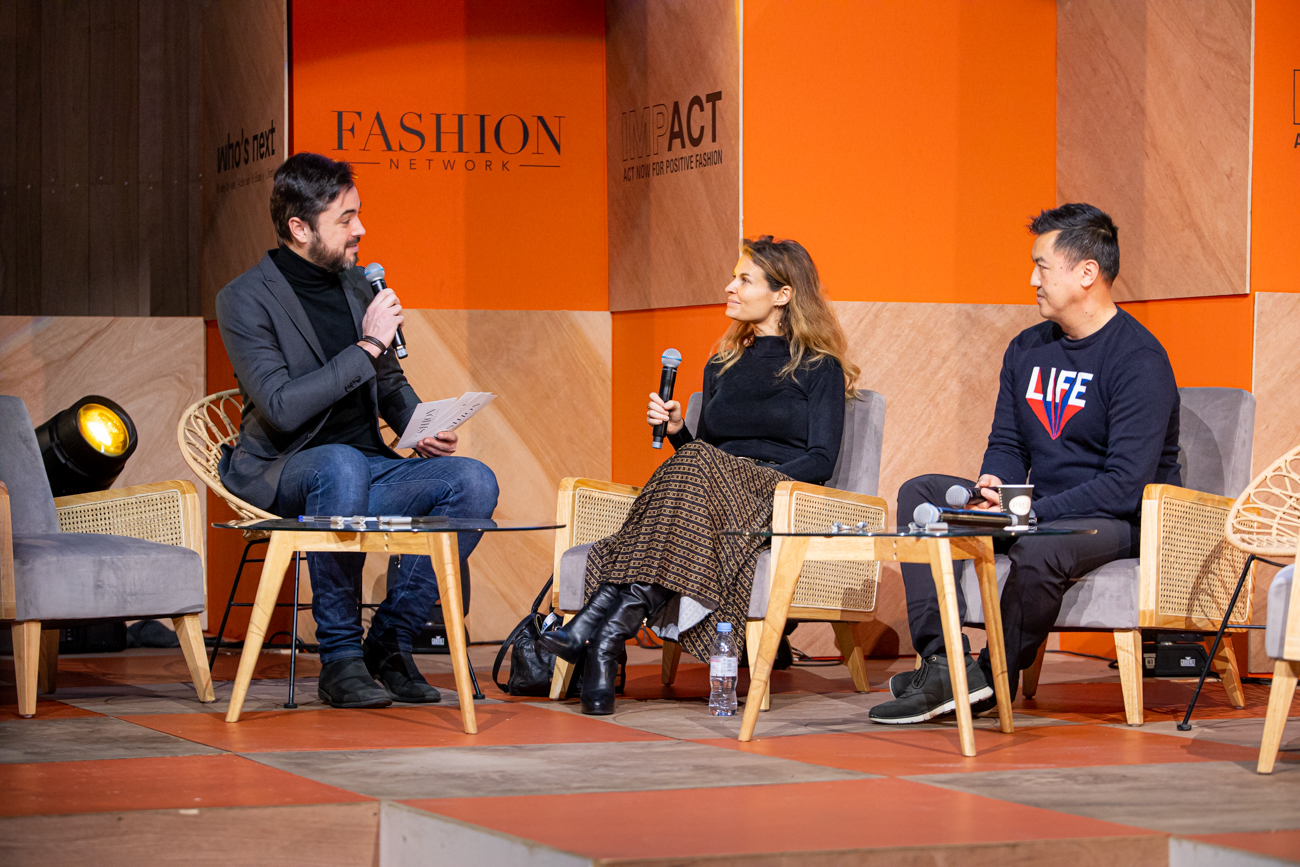EMOTIONAL FASHION
Trends
brands have to hold authenticity and dialogue as core values
In 2020, fashion and luxury seem to confirm the already widespread slogan: from emotion, you will give. Second only to experience, emotion is the new holy grail for brands and communications professionals. The customer is therefore placed at the centre of their strategies. This concept is not particularly groundbreaking, having already been analysed in Marc Gobé’s 2002 publication, ‘La marque de l’émotion’. According to the head of the Desgrippes Gobé Group agency, industrial society has created an emotional society in which the commercial success of a product not only rests on its pure materialism, but also on its symbolic value and the receptivity of the consumer. Labels’ branding, therefore refocuses on emotion - an effective means of standing out from a myriad of others, all equally connected and influential. Today, brands and consumers have a, ‘Je t’aime moi non plus’ relationship. ‘Sustainable’ brands seem to be ahead of the game in the business of holding authenticity and dialogue as core values. It was these new, sustainable models which came to be discussed by Karine Schrenzel, head of 3 Suisses and Fashion Data’s Pingki Houang, moderated by journalist Matthieu Guinebault, of the Fashion Network.

Long dehumanised by years of industrialisation and fast fashion, today, fashion takes a vow of humanity. Faced with an increasingly committed and well informed consumer, it must convince us of its ‘human’ qualities in order to create a rich and lasting relationship, based on a word which has become key: trust. In order to uphold this in the long run, it must therefore reassure its clientele through transparency. The traditional pyramid-model relationship of brand on top, client underneath, is outdated and seems to be moving towards a more human-to-human dialogue. It seems that the time is rife for conciliation. Or better yet, reconciliation.
Consumers are becoming central in brand strategy and it is no longer a question of losing them in disingenuous storytelling, but of inviting them into a world which is attractive as much in its designs as in its symbols and values. The rise of the all-digital world has led to a new balance of power in the race for sustainability and environmental responsibility. Young people in particular defend a new way of consuming, strongly influenced by the principles of sustainability. From product manufacturing conditions to resale value, a revision of the whole value chain is necessary if brands are to attract this rebellious demographic. “Millennials were amongst the first to denounce overconsumption,” explains Pingki Houang, from Fashion Data. Unlike their elders who consume a lot and are guided by a more experiential logic, young people prioritise sustainability, authenticity and feelings. A garment which evokes emotion - this could well be the challenge for tomorrow’s fashion industry. “There is a growing desire for more responsible fashion. Many brands have emerged in this climate, notably the DNVB,” explains Fashion Network’s Matthieu Guinebault.
‘Digitally native vertical brands’ which are launched online and founded on the ‘direct to consumer’ business model, radically redefine the standards of retail and its value chain. Faced with this new paradigm of responsibility, DNVBs engage and position themselves in this flourishing market by spreading well-established values and frequently interacting with their customers. And if small brands lead the way, large ones follow.

Emotion and dialogue - these are effectively the pillars of the new strategy of 3 Suisses and its director, Karine Schrenzel, who is betting on bringing this heritage brand back to the forefront. 3 Suisses started out as a mail order catalogue selling knitting wool. Established in 1932, it later became iconic, following the growth of ready-to-wear. The catalogue, which would go on to be the first to publish an image of a woman wearing trousers on one of its 1969 front covers, has witnessed decades of fashion, also paving the way for collaborations with big brands, such as Sonia Rykiel in 1977. However, time has moved on since the golden age of paper and fashion catalogues. Since the globalisation of the market, production has gotten out of hand and digitalisation has revolutionised everything. Like its longtime rival, La Redoute, 3 Suisses has had to rethink its model and adapt to the new issues of the industry whilst upholding its original DNA: the promotion of popular and accessible fashion, which highlights know-how.
“We need to put emotion back into fashion brands’ value systems and to open up dialogue,” insists Karine Schrenzel. There is a real appetite today for brands to get together, exchange and share projects. The transformation of the 3 Suisses model is a good illustration of the turn taken by the industry. We are at a crossroads.” The brand thus defends the prism of sustainability and the need for more responsible fashion on a human scale, notably promoting a return to ‘Made in Europe’ after years of offshoring, particularly to Asia. A model in the spirit of the times, which seeks above all to be able to be maintained in the long run. “Sustainability has become essential - it’s one of the real challenges of green fashion. What’s more, we must re-establish the true value of garments. The higher price point of a product supports its sustainability: the real issue is the financial viability of green fashion,” concludes Karine Schrenzel.
Like 3 Suisses, a growing number of brands are reinventing themselves by putting clothing, social aspects and ethics at the forefront of their concerns and finally returning to a more human model. By separating themselves from often immoral mechanisms and neurotic, fast-paced systems, these new fashion artisans can return to more authentic values. This is apparent, for example, in the importance placed on dialogue through a catalogue or physical store. “Our forces are our shops and local teams. It is the welcome which generates emotion,” concludes Pingki Houang of Fashion Data. Without returning to institutionalised well-being, or succumbing to a repackaged version of ‘greenwashing’, today’s fashion industry dreams of being slower and calmer: more human.